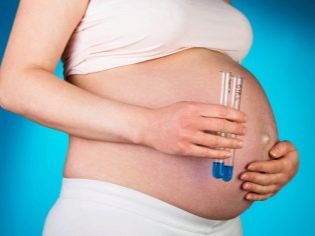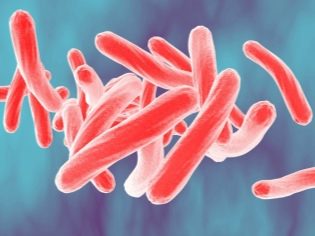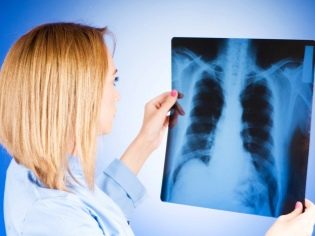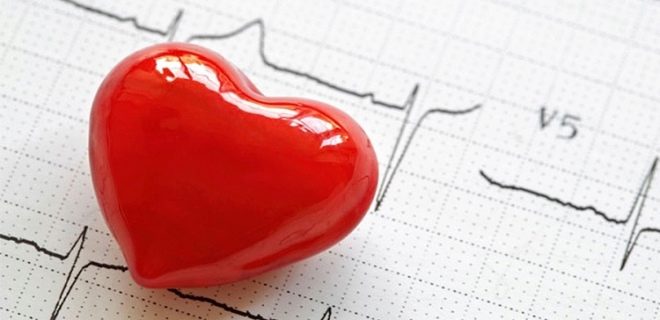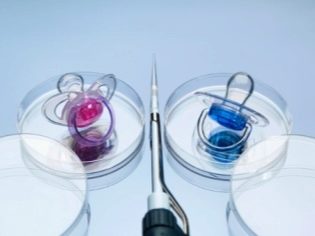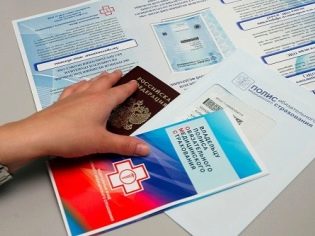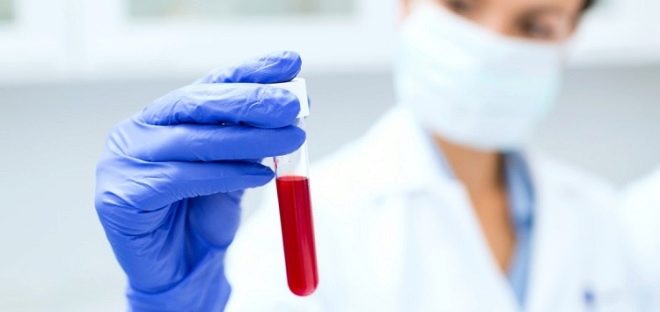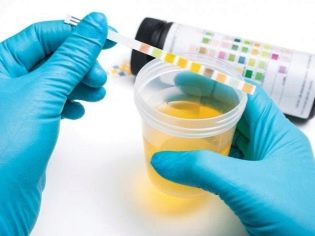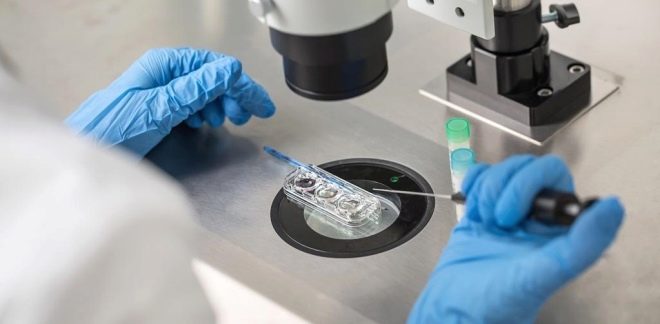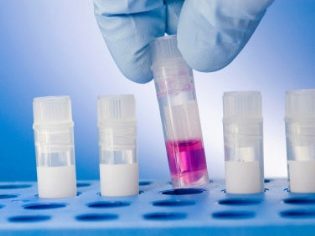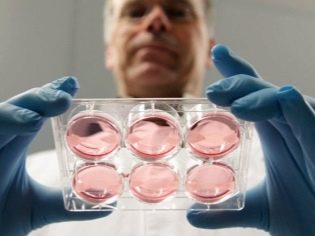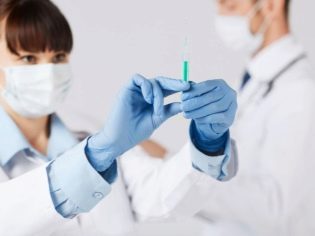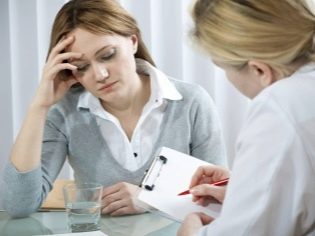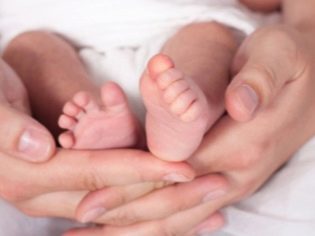Free IVF on OMS: How to get a quota
The procedure of in vitro fertilization is complicated and rather expensive. On average, in 2018, the cost of an IVF protocol in Russia starts from 140-150 thousand rubles. Not every family that dreams of heirs will be able to find such sums. They can come to the aid of the compulsory health insurance program - you can make free IVF in Russia under the OMS policy. How to get a quota for artificial insemination, we will explain in this article.
Governmental support
The first IVF was successfully conducted by British specialists in 1978. A girl was born. In 1985, in the USSR, two children “from a test tube” were born — in Moscow, a girl, and in Leningrad, a boy. Prior to the beginning of the “zero” procedure was exclusively paid and the state was not financially supported.
In 2010, the President of Russia outlined the task of increasing demographic indicators. In this regard, the IVF program was included in the state strategy of raising the birth rate. There are two main programs of IVF - one at the federal level, the other operates in each specific region.
Since 2012, it has been decided in Russia to subsidize IVF in cases where it is necessary and shown to a barren couple.
Since 2014, the number of attempts is not limited, you can use the right of free IVF as many times as you need to achieve a positive result - the onset of pregnancy.
At the federal level, an annual decision is made to allocate a certain number of quotas for IVF to the regions.
In 2018, their number was significantly increased, which means that the chances of happiness for Russian women and men who cannot conceive a baby on their own are given more.
The procedure for granting quotas is regulated by the Federal Government Resolution No. 1074, which, by the way, regulates all other state guarantees of free medical care in our country. The procedure for registration and admission of couples to IVF is governed by the Order of the Ministry of Health of Russia of August 30, 2012, which is popularly called simply “107N”.
Funding from the federal and regional budgets includes both the entire IVF program as a whole, and payment for its individual stages. In some cases, even the use of donor eggs and sperm is paid for by the state. Naturally, many infertile couples dream of getting such a free try. But in practice, it turns out that setting quotas is not such a simple matter.
How to get a quota?
The conditions for granting a quota for artificial insemination, stipulated in a federal decree, and conditions that are established in a particular region, may differ, but only slightly. Before making a decision, be sure to familiarize yourself with your regional IVF program, read all the restrictions and necessary conditions for obtaining such medical care.
To begin with the paperwork that will confirm the fact of infertility. To get them, a woman should go to the antenatal clinic at the place of residence, and the man should go to the urologist at the clinic at the place of residence complaining about the absence of pregnancy for more than a year of natural attempts to conceive a baby.
It is better to be examined in parallel to both spouses, so the collection of necessary medical documents will take less time.
Doctors prescribe a couple of tests. According to the order of the Ministry of Health of Russia, the analysis alone will not do. Based on the examination, the doctor will make an extract (a sample of the extract is presented in the appendix to the above-mentioned order of the Ministry of Health). The statement is sent to the special commission, which forms the register of pending reproductive assistance in the region. If the commission, after reviewing your analyzes and the results of the surveys, gives a positive conclusion, then your family is entered in the register, the couple receive a referral to prepare for IVF.
A married couple will be able to find out about the queue advancement independently, since the portal of the regional executive body always shows in real time a queue for IVF in the Federation subject, only instead of the patients' names there are special codes. Each woman is assigned an individual cipher.
The Commission will provide the spouses with not only the cipher and referral, but also a list of clinics and medical centers that work with IVF on OMS. While the couple is waiting for their turn, they will have to choose one clinic from the list that they trust in the procedure.
After the choice is made, the couple writes a corresponding statement to the commission and receives a referral to the very clinic that they indicated in the documents. After a visit to a medical facility, it becomes clear how long to wait for the procedure.
But the spouses obviously will not have to be bored, because from the moment they receive the referral they still have to undergo quite a lot of research and analysis that is required by the reproductologist for planning the IVF protocol.
Causes of failure
The decision of the commission is not always, alas, is positive. Sometimes a couple may be refused a quota.
Reasons for refusal:
- Violation by the doctor who provided the extract, the order of paperwork. In this case, it is enough to redo the extract in accordance with the sample of the Ministry of Health and again submit it to the commission.
- Identified contraindications to the procedure, and it happens much more often.
Contraindications that give the commission the right to refuse are:
- tuberculosis;
- viral hepatitis, including in the period of exacerbation;
- HIV infection in women at the stage of primary and secondary manifestations (in a state of remission or subclinical manifestations, the decision is revised);
- syphilis in any of the partners (with a cure, the decision can be changed to positive);
- cancer in women;
- benign tumors of the uterus or ovaries (after removal, the decision may be revised);
- anatomical defects of the uterus (congenital or post-traumatic) that interfere with carrying a child;
- severe diabetes;
- mental illness requiring episodic or systematic treatment with psychoactive drugs;
- heart defects, rheumatic changes, myocardiopathy;
- history of heart surgery, including those associated with valve replacement and other high-tech interventions;
- stroke, history of a heart attack;
- the second and third stages of hypertension;
- cirrhosis and liver degeneration;
- severe kidney disease;
- gynecological pathologies that prevent pregnancy - polyps, fibroids (after the treatment, the verdict of the commission can be changed);
- idiopathic, undetected causes of infertility (IVF can only be carried out according to the federal program, the regional one will be denied).
All analyzes that the couple passes at the first stage of paperwork, have their own statute of limitations. Therefore, sometimes the failure may be associated with the overdue results of any clinical tests.
The couple should carefully consider the issue of a package of all certificates and documents in order to exclude such annoying reasons for refusing the long-awaited IVF.
Who is entitled to the free procedure?
Take advantage of quotas for IVF citizens of Russia who have reached the age of majority, who have a passport and an OMS policy. In this case, the fact of infertility of one or both spouses must be confirmed by medical certificates and the conclusion of the doctor at the place of residence. Previously, in vitro fertilization did not allow couples who are not in an officially registered marriage, as well as women whose age is above 39 years. Now such restrictions have been removed.
In the presence of medical indications, official spouses, people living in a civil marriage, and partners who do not live together at all, but decided to become parents, can make in vitro fertilization.
The quota, according to the order of the Ministry of Health, can also be obtained by a single woman who does not have a permanent sexual partner, as well as a single man, if he expresses an intention to become the father of a child who makes a surrogate mother for him. An important condition is that single parents should not have children of their own.
Age restrictions, as already mentioned, removed. Now, women of any age can receive a quota if they have indications and there are no contraindications to receiving such medical assistance. Validity of the received quota - until the end of the calendar year. The pair has as many attempts as is necessary for the onset of pregnancy, because the limit on the number of free protocols has also been canceled. Each new protocol will need to receive a new direction.
Not every infertility revealed in men and women needs the use of expensive and rather labor-intensive reproductive assistive technologies. In most cases, the spouses can help other methods - medical, surgical.
IVF is recommended when the couple was treated, but it did not bring results and the pregnancy did not come within a year after the course of treatment. For women over the age of 35, the waiting period for the effectiveness of the primary treatment provided is reduced to six months.
Thus, patients with the following are eligible for IVF on a policy for regional or federal funds:
- obstruction of the fallopian tubes, missing pipes, unavoidable adhesions in them;
- endocrine disorders that prevent pregnancy (extinction of ovarian function, their insufficient functioning, menstrual disorders, which could not be eliminated by other means);
- lack of ovaries;
- HIV infection in one of the partners;
- male factors of infertility, in which natural conception is not possible;
- infertility with an undetected genesis;
- other causes of infertility that do not contradict the list of contraindications to the procedure for CHI.
List of required documents
As for the documents, the most difficult will be to collect a list of necessary examinations - it is quite impressive. The rest of the men and women do not need any special certificates. If all the analyzes on the list are collected, the following documents should be attached to them:
- a copy and original of the passport of each spouse;
- a copy and the original policies of the OMC of both spouses;
- copy and original of the patient or patient’s SNILS;
- the decision of the commission of the subject of the Federation on admission to the waiting list or the decision of the federal commission;
- referral to IVF (from female consultation at the place of residence);
- statement of the patient (and her spouse, if any) on the IVF procedure with the obligatory indication of all passport data, numbers and series of other documents listed above.
This package of documents is provided directly to the selected medical institution.
It is best for a couple to keep a spare package of copies of all these documents. It can be useful in whole or in part when re-issuing a quota, if the first protocol is unsuccessful.
Analyzes
A detailed list of tests required for free IVF attempts is also regulated by the order of the Ministry of Health, which was mentioned above. Doctors in the field do not invent anything, they simply do not have the right to subtract or expand the list that exists in the official source. It can be supplemented or expanded only under the terms of the regional program. Every year, specialists from regional Ministries of Health revise it and can make adjustments.
In 2018, in most regions, it was necessary to pass the following tests to confirm the diagnosis:
- a blood test for hormones in a woman (a study of the level of prolactin, gonadotropins, steroid hormones, AMH is necessary);
- Ultrasound of the uterus and appendages;
- diagnostic laparoscopy of the fallopian tubes (if a woman refuses to have laparoscopy, perform hysterosalpinography or contrast echo-hysterosalpinoscopy);
- hysteroscopic examination of the uterus, with an endometrial biopsy if necessary;
- spermogram of a husband or partner;
- tests for men and women for HIV, syphilis, viral hepatitis, and urogenital infections.
At the preparatory stage for the IVF procedure itself, which has already been approved by the commission, the couple should also undergo other tests. The list of examinations for women is stipulated by the order of the Ministry of Health of Russia, it remains unchanged, but individual clinics may require additional tests, Therefore, the list should be checked with the recommendations of the medical institution:
- blood tests for HIV, syphilis, viral hepatitis B and C, herpes simplex antigens in the blood;
- a smear from the genital tract on microflora and infections, including common types of fungi;
- general and biochemical blood tests, as well as the determination of hemostasis factors (coagulogram);
- general urine analysis;
- Ultrasound of the pelvic organs;
- mammography (for women over 35);
- Breast ultrasound (women under 35 years old);
- pulmonary X-ray (if it was not done during the year);
- electrocardiogram;
- Consultation of genetics and karyotyping analysis (for women who have cases of genetic or chromosomal abnormalities among relatives, as well as for all women over 35 years old);
- blood for TORCH infection (rubella, toxoplasmosis, cytomegalovirus and herpes);
- cytology of the cervix;
- consultation of an endocrinologist, ultrasound of the thyroid gland, adrenal glands (women with identified hormonal disorders).
Men are required to retake spermogram. In addition, they should also have blood tests for HIV, syphilis, torso infections, general and biochemical blood tests, urinalysis, chest x-ray, if it has not been done in the past 12 months.
Both partners donate blood for the group and Rh factor. A joint appeal to genetics is mandatory for couples in which relatives of the husband also have cases of hereditary diseases. Karyotyping is done in this case to both spouses. If idiopathic infertility is suspected, a couple makes an analysis of genetic incompatibility.
The clinic selected for free IVF can recommend and request other examinations if the reception at the reproductive doctor has doubts about the state of health of the woman or man. So, a certificate from a cardiologist or nephrologist may be required if the cardiogram and urinalysis show any abnormalities.
Also, all couples will need a physician's opinion before entering into the IVF protocol, which will give it only after a full examination and the provision of all the above analyzes.
How much does the state pay and does it need to pay extra on its own?
The amount of funding for the IVF protocol changes annually. In 2018, the federal quota provides for payment of 141 thousand rubles. If the cost of IVF for a particular couple exceeds this amount, the spouses will have to pay extra from their own pocket.
Prices for IVF in different regions of Russia vary: the most expensive protocols in Moscow and St. Petersburg (from 180 to 270 thousand rubles), the most loyal prices in the Volga region and Siberia (from 140 to 200 thousand rubles).
In general, the cost will depend on the amount of reproductive care that is required by a particular couple. So, IVF in the natural cycle will pass 90-120 thousand rubles. This amount will include replanting of embryos. The short protocol of the stimulated type on average costs 150 thousand rubles. This amount includes stimulation of follicles with hormones, as well as stimulation of egg maturation, 4-5 ultrasound scans to assess follicle maturation, as well as ovarian puncture, fertilization and replanting of embryos.
The long-term IVF protocol is much more expensive, in which prior to stimulation of the ovaries, preliminary hormonal preparation of the sex glands is performed. The average cost of a long ECO protocol is 170-230 thousand rubles.
If preimplantation diagnostics is shown (research and selection of the best embryos), then this increases the cost of the protocol by 40-150 thousand rubles. If fertilization is difficult due to the poor performance of a male spermogram, an intracytoplasmic injection of spermatozoa may be required, in which the most healthy sperm is injected directly into the egg by hand. ICSI increases the cost of the protocol by another 30-40 thousand rubles.
Thus, the procedure for a couple is unlikely to be completely free, because the amount stipulated by the budget for the quota is hardly enough to pay for the entire protocol in stages. Therefore, at the reception at the fertility specialist, it is important to immediately determine the cost of the protocol, choose which part of it should be paid by the CHI, and which steps the couple undertakes to pay on their own.
Cryopreservation of the remaining eggs, sperm, embryos was not previously included in the compulsory medical insurance services, it had to be paid for. Freezing can make it much easier and cheaper to make the next couple’s attempts if it’s impossible to get pregnant the first time, and it can be useful if the couple wants to get pregnant again after a few years. Therefore, from 2018, cryopreservation can also be paid for by the MHI policy by quota means. According to the policy donor eggs or sperm cannot be paid for, if they are necessary.
If a couple wants to use the services of a surrogate mother, as well as pick up an individual (not an anonymous biomaterial donor), the couple will enter into an agreement with them, the payment of donor services will not be reimbursed by public funds.
Thus, the total cost of the protocol should be deducted 141 thousand rubles. The resulting difference will be the amount of additional payment that patients themselves will have to pay.
What does the OMC fertilization program include?
The order of the Ministry of Health of August 30, 2012 clearly indicates how the services can be paid for by funds allocated by the regional or federal budget. This list includes:
- Stimulation of superovulation for more eggs to be fertilized. The service includes the cost of medicines.
- Puncture of follicles and collection of oocytes. The procedure includes the cost of anesthesia.
- Fertilization of eggs by sperm in the embryology laboratory. The price includes the initial assessment of germ cells and their cleaning.
- ICSI.
- Cultivation of embryos (within 2-6 days according to indications).
- Embryo transfer to the uterine cavity.
- Cryopreservation of the remaining embryos (as desired by the patients).
After the embryos are placed in a woman's uterus, the protocol is considered complete.It will be possible to judge his success or failure only after 14-21 days, when a woman can make blood tests for hCG and the first ultrasound. This pregnancy diagnosis is no longer included in the protocol, it is paid for by the patients themselves.
At the stage when preparation for stimulation (the first stage) is underway and at the end of the protocol, all the tests that may be needed and drugs that can be prescribed in addition are not included in the cost of covering the quota and will be paid.
Services not included in the state program
If the couple wants to save frozen eggs, embryos and sperm until the next attempt or in another case, storage will have to be paid separately. On average, it costs 1-3 thousand rubles for each month of storage.
If it is not possible to obtain sperm in a natural way of masturbation, it is taken by means of a testicular biopsy. This surgery is also not paid by quota funds.
Genetic research of embryos at the stage of their cultivation to exclude hereditary diseases, sex determination (in cases where the spouses have genetic diseases linked to the sex chromosome) also cannot be paid by the OMS and refer to the patient's own expenses.
Procedure
The procedure for doctors and patients to receive assisted reproductive care is also specified by the existing regulatory framework. After the pair passes all the analyzes and examinations necessary for entry into the protocol, it is assigned the date of entry into the protocol. Spouses sign informed consent to the procedure and are warned about the possible consequences.
First of all, they are informed about the effectiveness of IVF. She, alas, is not high. Neither on a paid basis nor under the OMS policy, doctors will not be able to guarantee that pregnancy will definitely come. After the first IVF attempt, pregnancy is diagnosed in about 35% of women who are under 35 years of age, and their health is quite satisfactory. For the rest, the IVF attempt will be unsuccessful, and this should be morally prepared in advance.
The paid amounts and the amount stipulated by the quota are not refunded if the IVF attempt fails. This should also be known. The next IVF attempt will be paid separately, its cost may change (decrease or increase) depending on what the next protocol will be.
After signing all the documents, the doctor gives general recommendations on preparing for the protocol: the couple must adhere to a healthy lifestyle, eat fully, take vitamins, and if necessary, preparations that improve the quality of germ cells.
With a long protocol, hormone therapy is prescribed a couple of weeks before the next menstruation, and with a short one - immediately after the end of the next menstruation. First, injections and hormone pills achieve the growth of several follicles, whereas with the natural cycle only 1-2 are formed. When the ultrasound shows that there are at least three follicles and more than 16 mm in size, the HCG preparation is injected for the earliest maturation of the eggs.
36 hours after the injection, the ovaries are punctured. In this case, the woman is administered general anesthesia. The contents of the follicles with a thin needle through the back wall of the vagina is extracted into special containers that are sent to the embryology laboratory. After 4-6 hours, concentrated and purified sperm are added to the Petri dishes with eggs, and fertilization is expected. If necessary, manual fertilization is carried out at this stage using ICSI or IMSI methods.
A day later, the embryologist counts the number of resulting embryos. Cultivation lasts from 2 to 5 days. The number of eggs specified with the patient is transferred to the uterus. This is a painless and fairly quick procedure. Through the catheter, the embryos are inserted through the cervical canal into the uterus with a disposable syringe. A woman is prescribed progesterone medications to support implantation. Remaining embryos may freeze.
If the first attempt was unsuccessful, the woman can apply for the second quota, because the expensive procedure must be completed. The couple may re-apply for participation in the program at any time after the unsuccessful first attempt. She can take part in both the regional and federal programs.
Repeated IVF does not have to pass those tests, the validity of which is long enough (from six months or more), and therefore the design may take less time and will save money. However, the quota waiting period may be different - it depends on the number of quotas allocated by the regions or by the Government of the Russian Federation for the current year.
Do not forget about the recovery period - doctors recommend to “relax” and gain strength within 2-3 months, and after a miscarriage or a missed abortion - about six months.
Considering all the time required to collect information and waiting for a place in the registry, couples, according to reviews, can make 1-2 attempts per year. In the number of attempts, the law does not limit.
Reviews
According to reviews, there are enough difficulties with registration of quotas for IVF, starting with the stage of obtaining a referral and ending with the choice of clinic. Some institutions do not welcome patients with a quota referral. They may refuse IVF for a variety of reasons - low levels of AMH, the presence of genetic risks and pathologies, etc. Then the couple has to look for another clinic that will take them for treatment.
The lack of information about what couples can count on OMS, and what they can’t do, does not sometimes allow an objective assessment of their financial and other opportunities. Doctors in antenatal clinics sometimes have a rather small amount of information about what and how it will be needed for IVF, limited only by the knowledge of the rules for applying for a referral.
To reduce the difficulties, it is worth registering on the portal of barren couples.
In the next video, the head physician of the 3rd Clinical Department of the Medicina Clinic tells about the main steps that a woman must take if she wants to join the in vitro fertilization program for free through the OMS system.


